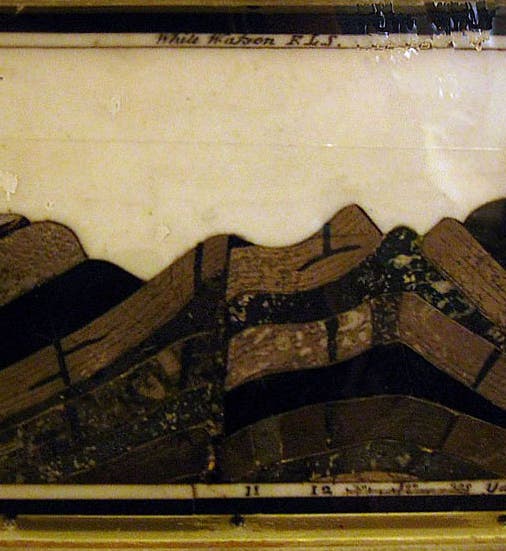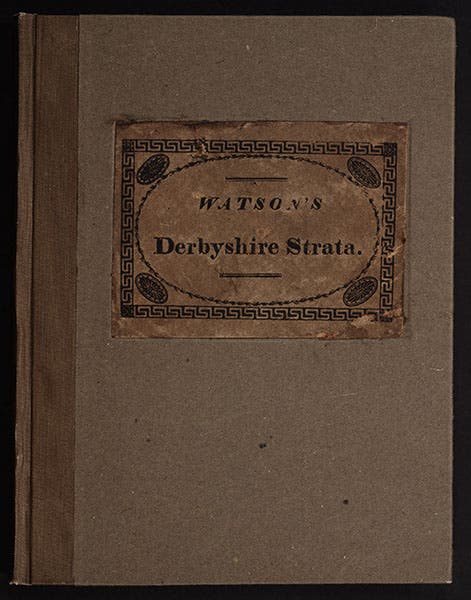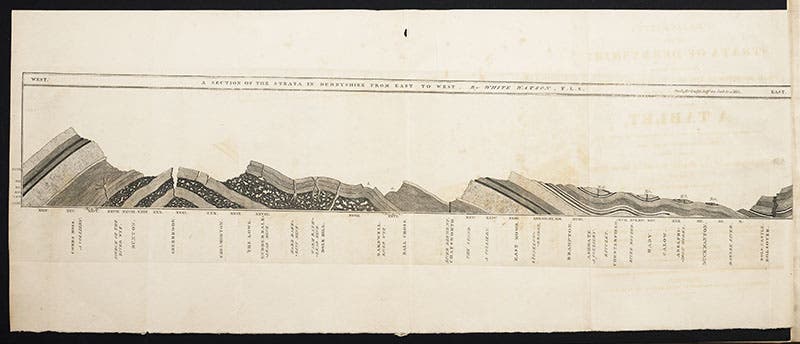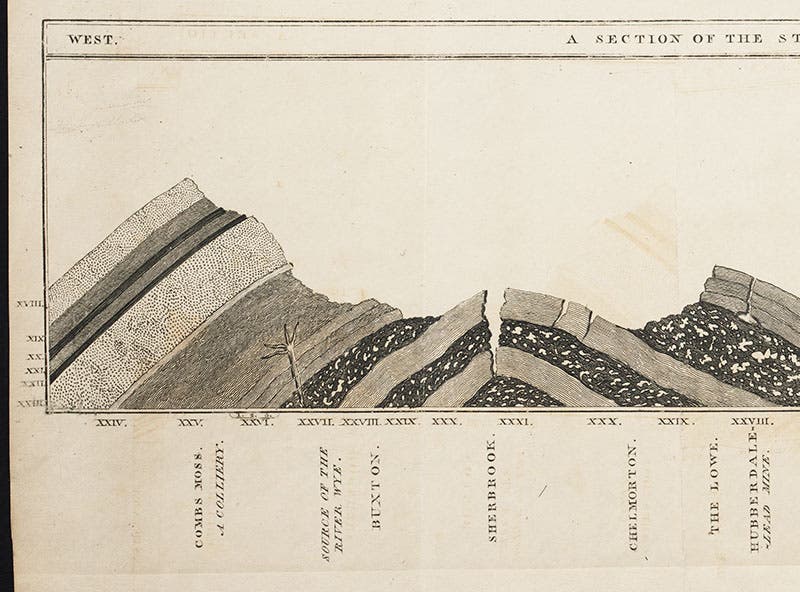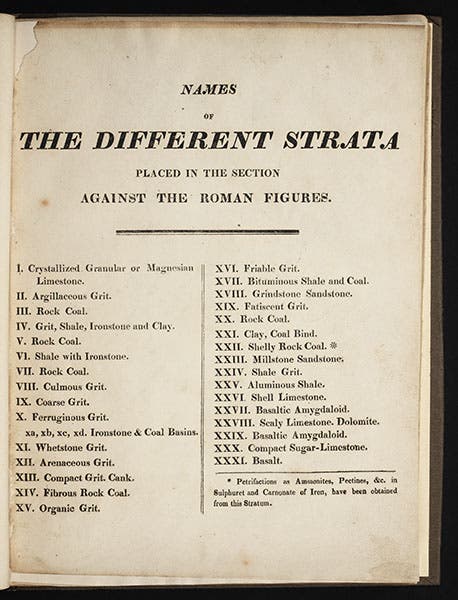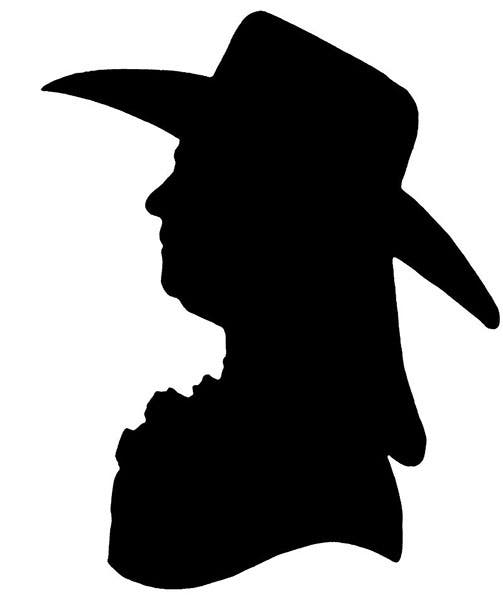Scientist of the Day - White Watson
White Watson, an English geologist, artist, and marble sculptor, was born Apr. 10, 1760. Living his entire life in Derbyshire, he had a wide variety of talents, including creating silhouette portraits and designing botanical gardens, but we focus today on his geological interests. In 1778, John Whitehurst had published a book on the geology of Derbyshire, with a number of engravings showing the sequence of strata at various locations. He also pointed out that Derbyshire strata included three different layers of a basalt-like rock that was called toadstone, after the almond-shaped cavities within that resembled the back of a toad. We featured Whitehurst as our Scientist of the Day exactly two years ago, which means that Watson and Whitehurst shared a birthday. Watson got the idea of recreating one of these Whitehurst sections in stone, the very stones that comprise the layers of rock that Whitehurst identified. He presented one of these to Whitehurst, and it is said that this first stone section is the very one on display today in the Derby Museum (first image). Over the years, Watson made many of these profiles-in-stone, and a number survive in various British museums.
In 1811, Watson published a book, A Delineation of the Strata of Derbyshire. He distinguished 31 different strata in Derbyshire, and he illustrated their relative positions on a single large fold-out section at the beginning of his book. We see here the entire section (third image), and a detail of the left third of the plate (fourth image).
In the detail, the black layers with white pores within are the three layers of toadstone, which Watson called “basaltic amygdaloid” (amygdaloid means almond-shaped, referring to the internal cavities). They are identified on the chart by the numbers XXVII, XXIX, and XXXI (27, 29, 31).
Watson made no comment on the origin of these odd layers - since he was a follower of Abraham Werner, he probably thought they had a sedimentary origin, unlike Whitehurst, who believed they were volcanic. White also included a table in which he listed the 31 layers of Derbyshire rock (fifth image).
And did we mention that Watson was fond of making silhouette portraits? He did one of himself, wearing a hat, an auto-silhouette, if you will, and it survives and is on display in the Derby Museum (sixth image).
In 2004, when we mounted an exhibition on the discovery of geological time, Vulcan’s Forge and Fingal’s Cave, we displayed Watson's Delineation, open to the foldout section, as well as Whitehurst's book on the strata of Derbyshire.
Dr. William B. Ashworth, Jr., Consultant for the History of Science, Linda Hall Library and Associate Professor, Department of History, University of Missouri-Kansas City. Comments or corrections are welcome; please direct to ashworthw@umkc.edu.

